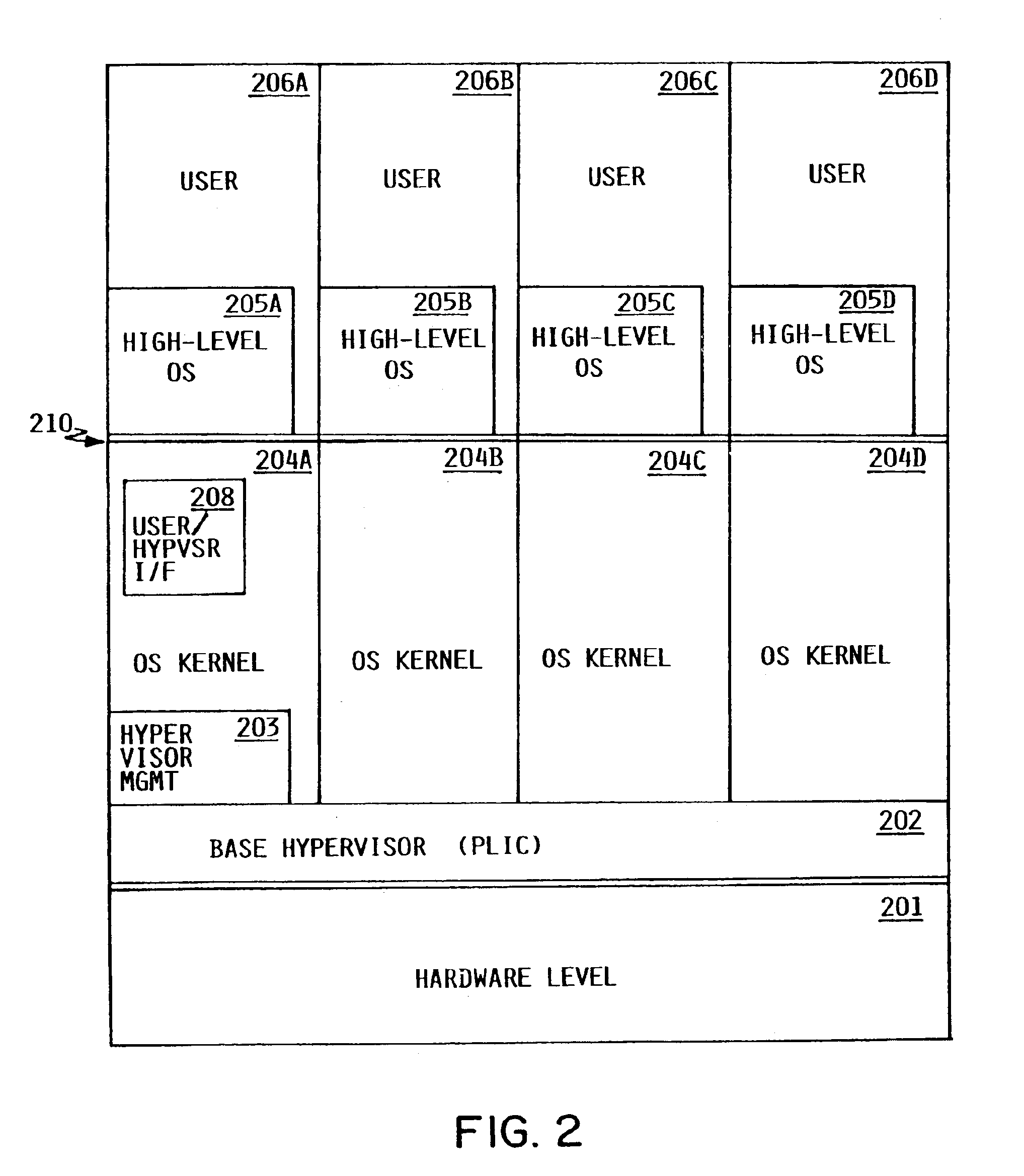Method and apparatus for allocating processor resources in a logically partitioned computer system
a computer system and processor technology, applied in the field of digital data processing, can solve the problems of limiting the ability of processors to increase clock speeds, unwanted side effects, and physical size reductions that cannot continue indefinitely
- Summary
- Abstract
- Description
- Claims
- Application Information
AI Technical Summary
Benefits of technology
Problems solved by technology
Method used
Image
Examples
Embodiment Construction
Logical Partitioning Overview
[0022]Logical partitioning is a technique for dividing a single large computer system into multiple partitions, each of which behaves in some respects as a separate computer system. Certain resources of the system may be allocated into discrete sets, such that there is no sharing of a single resource among different partitions, while other resources may be shared on a time interleaved or other basis. Examples of resources which may be partitioned are central processors, main memory, I / O processors and adapters, and I / O devices. Each user task executing in a logically partitioned computer system is assigned to one of the logical partitions (“executes in the partition”), meaning that it can use only the system resources assigned to that partition, and not resources assigned to other partitions.
[0023]Logical partitioning is indeed logical rather than physical. A general purpose computer typically has physical data connections such as buses running between a...
PUM
 Login to View More
Login to View More Abstract
Description
Claims
Application Information
 Login to View More
Login to View More - R&D
- Intellectual Property
- Life Sciences
- Materials
- Tech Scout
- Unparalleled Data Quality
- Higher Quality Content
- 60% Fewer Hallucinations
Browse by: Latest US Patents, China's latest patents, Technical Efficacy Thesaurus, Application Domain, Technology Topic, Popular Technical Reports.
© 2025 PatSnap. All rights reserved.Legal|Privacy policy|Modern Slavery Act Transparency Statement|Sitemap|About US| Contact US: help@patsnap.com



